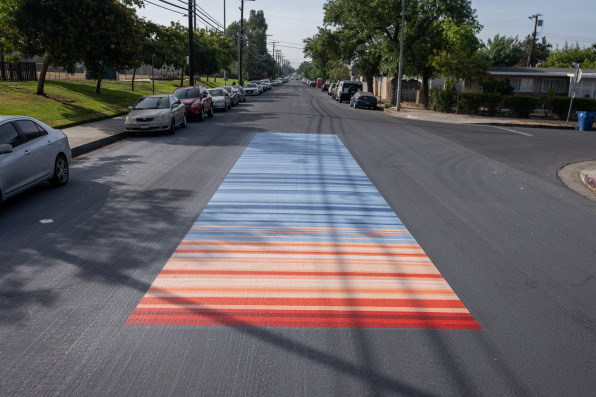
08-17-22
Always good to see initiatives such as this particularly where the pavement becomes blistering hot.
i am looking forward to gravity vehicles which i think are happening a lot sooner than we think. All these road bads can then become working hayfields at least. That will really cool thigs down.
We have a long standing horrible solution that is difficult to shake or even alter.
1 million square feet of L.A. roads are being covered with solar-reflective paint
The initiative covers roads, playgrounds, and parking lots, and it has already cooled the surface by 10 to 12 degrees.
[Photo: courtesy GAF Cool Community Project]
https://www.fastcompany.com/90779134/1-million-square-feet-of-la-roads-are-being-covered-with-solar-reflective-paint?ref=refind
It’s no secret by now that cities run hotter than the countryside: Fewer trees mean less shade, and concentrated human activity generates heat, which hard surfaces like pavement and parking lots absorb.
To combat the so-called urban heat island effect, some cities have been retrofitting public buildings into climate shelters, while others have been planting thousands of trees. One Los Angeles neighborhood is turning to solar-reflective paint.

[Photo: courtesy GAF Cool Community Project]The team behind the GAF Cool Community Project has just finished painting a whopping 1 million square feet of roads, playgrounds, and parking lots in Pacoima. The paint comes with special additives that reflect infrared light, meaning painted pavement ends up absorbing less heat.
Most of the surfaces have been painted a light shade of gray, but a local artist was commissioned to design a series of colorful murals on a basketball court, a school playground, and a parking lot.
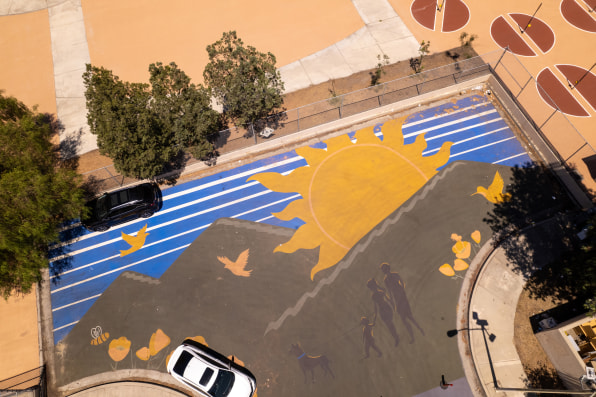
[Photo: courtesy GAF Cool Community Project]The initiative comes on the heels of a series of dangerous heat waves in the U.S. affecting more than 16 million Americans. Painting streets may not be the silver bullet that fixes the urban heat island effect, but in Pacoima, it has already cooled the surface by about 10 to 12 degrees, highlighting the potential for a simple yet effective upgrade.
The project will now investigate how much the cooler surfaces will bring the neighborhood temperature down as a whole.
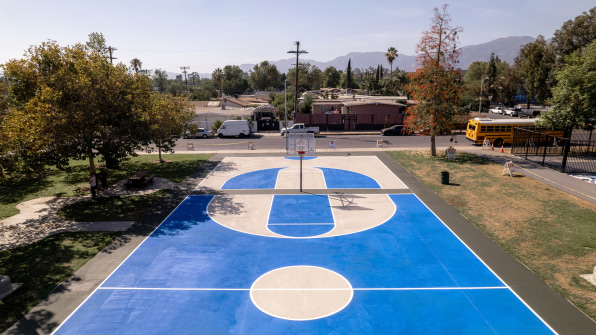
[Photo: courtesy GAF Cool Community Project]It’s not the first time that cities have turned to paint to reduce heat (though typically, that paint is white, like in New York City, where more than 10 million square feet of rooftops have been painted in the past 10 years).
The Pacoima project was led by roofing giant GAF as a philanthropic initiative, which has already worked with the City of Los Angeles’s Cool Streets Project and the L.A. Unified School District to paint almost 90 playgrounds and school parking lots across the city.
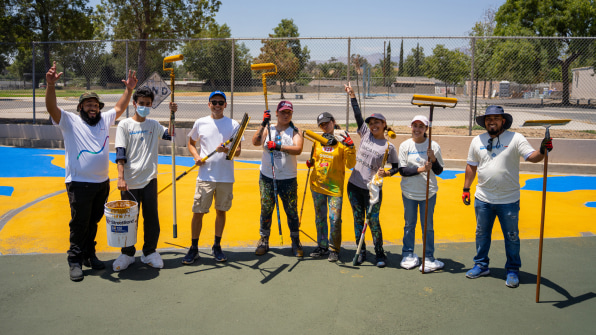 [Photo: courtesy GAF Cool Community Project]The idea is to see if a larger-scale initiative can have even greater cooling effects. For now, the data is anecdotal: When they measured in the middle of the day, the team noticed a 30-degree difference compared to untreated pavement. But over the next two years, the company will gather weekly data on the surface temperature throughout the neighborhood—and if the initiative proves successful, they’re hoping to replicate the model across other neighborhoods.
[Photo: courtesy GAF Cool Community Project]The idea is to see if a larger-scale initiative can have even greater cooling effects. For now, the data is anecdotal: When they measured in the middle of the day, the team noticed a 30-degree difference compared to untreated pavement. But over the next two years, the company will gather weekly data on the surface temperature throughout the neighborhood—and if the initiative proves successful, they’re hoping to replicate the model across other neighborhoods.“The ultimate goal is not just to lower the ambient temperature of the community but to see how it impacts the livelihoods of people in the community,” says Jeff Terry, vice president of corporate social responsibility and sustainability at GAF.
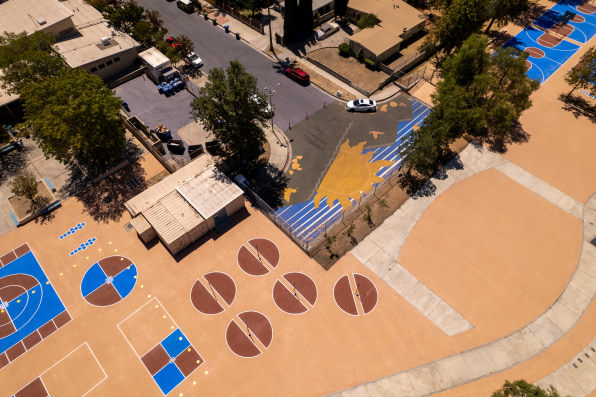 [Photo: courtesy GAF Cool Community Project]The concept relies on a special kind of coating called Invisible Shade. (It’s produced by StreetBond, a GAF company.) Eliot Wall, StreetBond’s general manager, explains that Invisible Shade comes with additives that don’t just reflect visible light (like conventional white paint) but also infrared light (IR). (Sunlight consists of both types, but IR light accounts for most of the heat.)
[Photo: courtesy GAF Cool Community Project]The concept relies on a special kind of coating called Invisible Shade. (It’s produced by StreetBond, a GAF company.) Eliot Wall, StreetBond’s general manager, explains that Invisible Shade comes with additives that don’t just reflect visible light (like conventional white paint) but also infrared light (IR). (Sunlight consists of both types, but IR light accounts for most of the heat.)“There’s a chance for a multiplier effect given those additives,” Wall says.
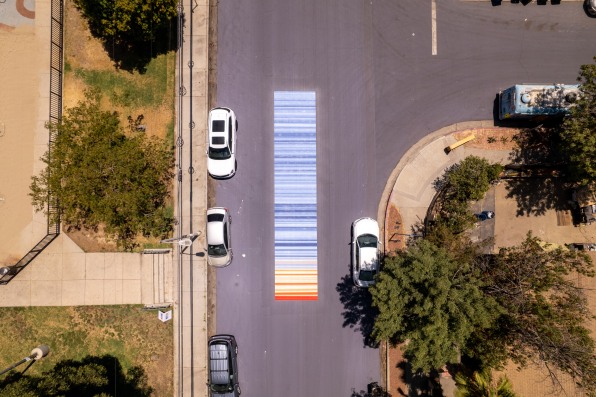
[Photo: courtesy GAF Cool Community Project]The Invisible Shade collection comes in 14 colors, but custom colors are also possible, like the range of shades developed for a “warming stripes” mural depicting the annual temperature change in L.A. County from 1895 to 2021.
“We created a visual connection,” Wall says. “And in doing so, created a space where people can spend more time.”
No comments:
Post a Comment